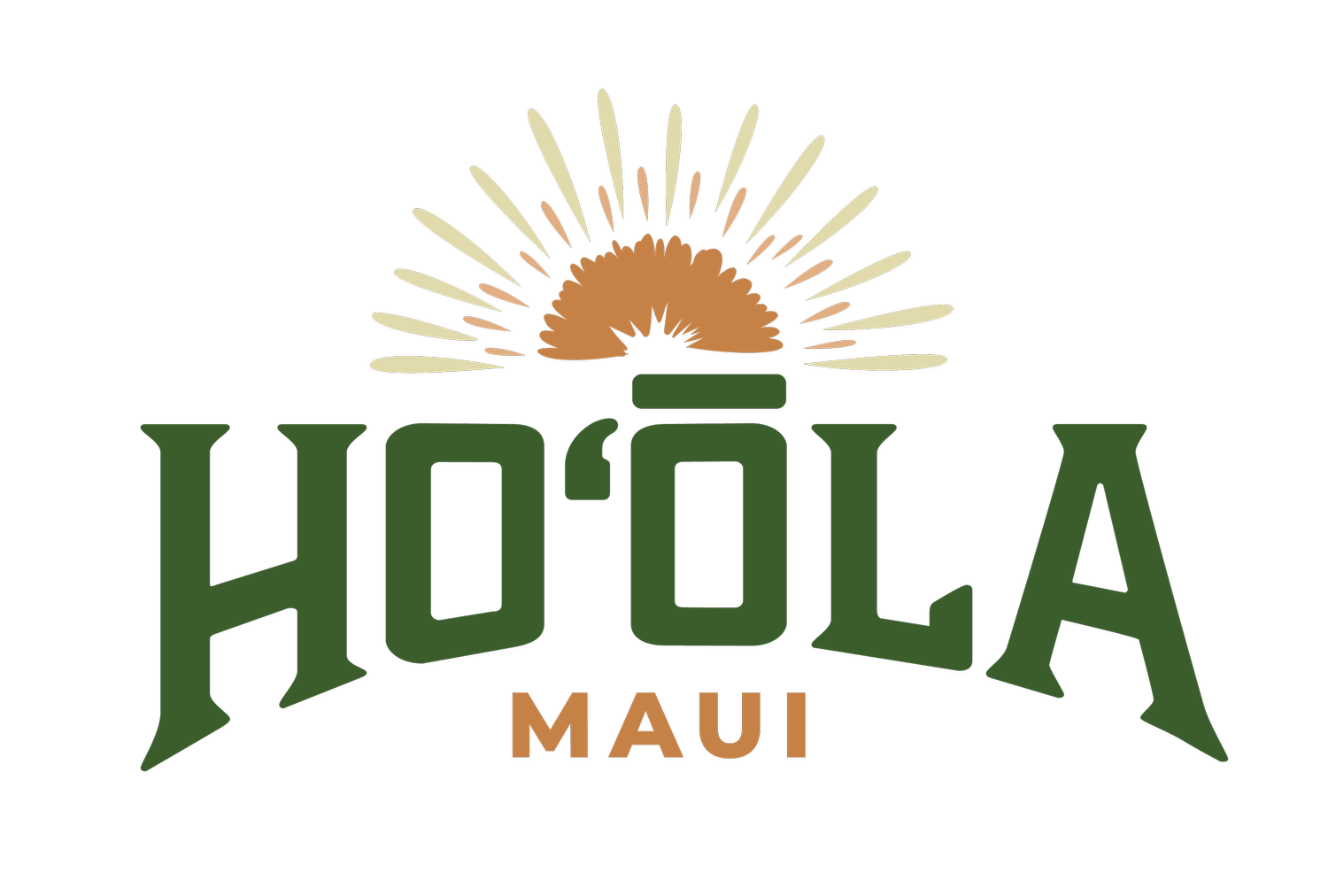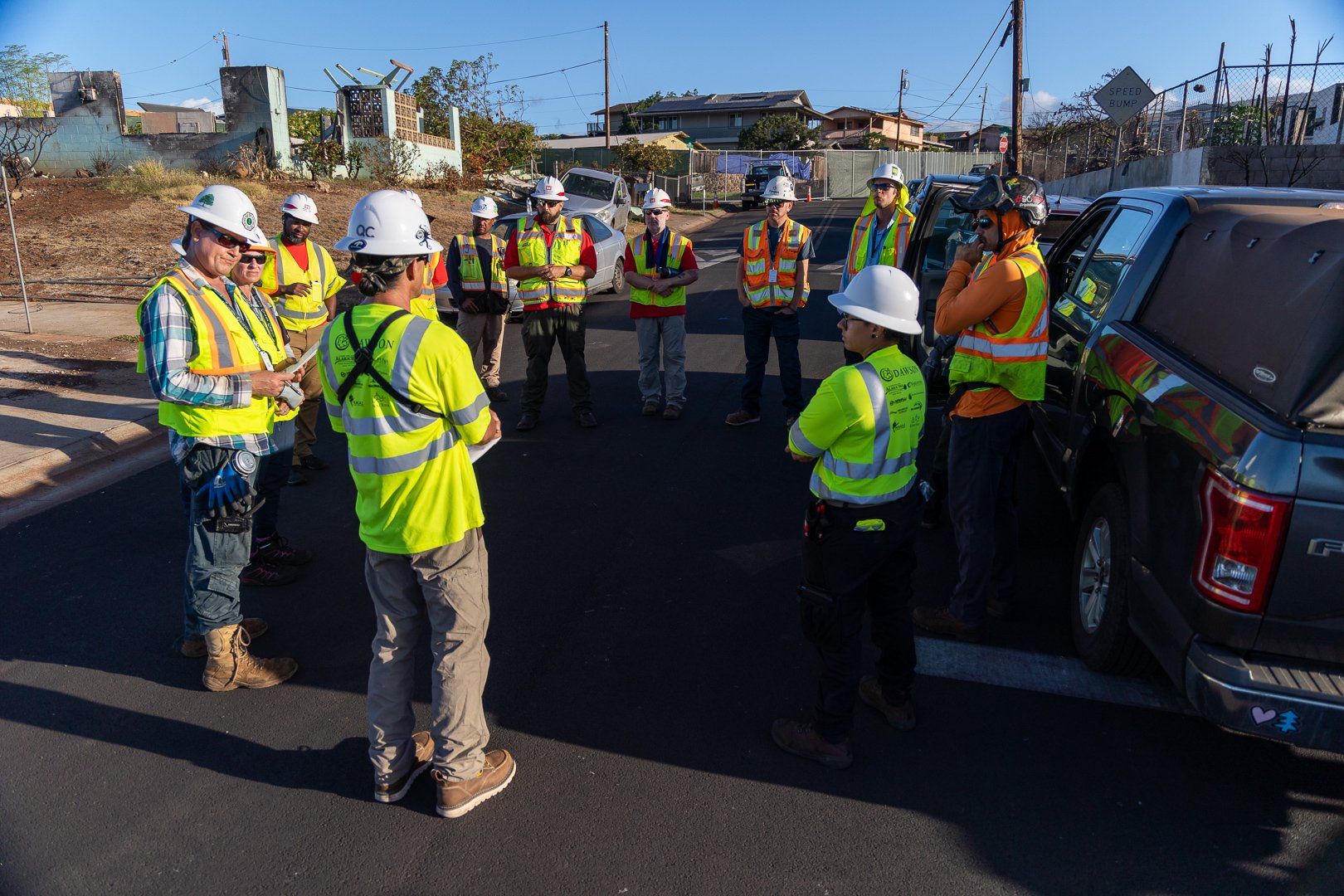Hoʻōla Maui’s strict safety protocols at job sites keep workers and the community safe
Hoʻōla Maui member organizations follow a robust set of safety protocols while working in the impacted zones, because the health and well-being of the community - including employees working in the field every day - is of the utmost importance. From site hazards like potential exposure to toxic substances to minimizing ash disturbance, Hoʻōla Maui crews are carefully trained and practice all safety protocols on a regular basis.
Training and Certifications
Before being allowed to start work in the field, all field workers for Hoʻōla Maui member organizations complete a 40-hour training on OSHA Hazardous Waste Operations and Emergency Response (HAZWOPER) standards, either through training on their own prior to joining the project, or with our Hoʻōla Maui partners at the Council for Native Hawaiian Advancement through their Trades Academy program at the Kākoʻo Maui office in Kahului.
Each person reviews an Activity Hazard Analysis (AHA) for each task they are performing so they are aware of the potential hazards and level of risk.
Personal Protective Equipment
All workers wear PPE appropriate for the level of risk of each task that is part of their role.
Every day, workers are provided with the right kinds of personal protective equipment (PPE), depending on the job and zone where they will be working. In restricted zones, all workers are required to have “Level D” PPE that includes a hard hat, safety glasses, safety toe boots (and insoles), a four-inch sleeve shirt, long pants, and hearing protection if the tasks they are doing that day require it. For workers that have tasks within the ash footprint on a property, also referred to as the exclusion zone, “Level C” PPE is required - a Tyvek protective coverall, booties, nitrile gloves, safety glasses, hard hat, and an air-purifying half-face respirator.
Daily Preparation
Each morning starts with an all-hands safety briefing and cultural protocol.
Hoʻōla Maui teams do a site-specific safety briefing upon arrival before starting work.
Each morning before going out into the field, the entire Hoʻōla Maui team participates in a cultural protocol and a safety briefing that covers weather conditions, safety observations, potential hazards, and personal safety. From there, crews disperse to work sites and have follow-up meetings with site-specific safety briefings tailored to the locations where they will be working that day.
Community Safety
Throughout the day, each team methodically documents hazards at each site. Every team member has the authority to stop work if something doesn’t look right or seems dangerous.
“We won’t ask any of our staff to put themselves or anyone else in harm's way. Safety comes first. We’ll come up with a way to mitigate or work around a hazard safely through engineering, substitution, or PPE,” said David Hale, DAWSON Site Safety and Health Officer.
Team members use an abundance of caution and care when working in and documenting areas that may have physical and/or chemical hazards.
Hoʻōla Maui planning teams are careful to coordinate work so that crews do not interfere with re-entry days for impacted residents as zones open up to them. When residents are in an area on a county-coordinated re-entry day, Ho’ōla Maui transport drivers will do their best to stay out of those areas to reduce traffic there, where roads can be narrow and many street signs are no longer legible.
Crews place a high priority on limiting community exposure to potential contaminants by keeping the dust from being unnecessarily agitated in work areas. Understanding the sensitivity of these sites, and to minimize the risk of cross-contamination of potentially hazardous ash to other areas, the PPE (like Tyvek protective coveralls) that crews wear within a property’s ash footprint are carefully taken off, sealed up, and secured on the site for removal with other hazardous debris.
Hoʻōla Maui member organizations are using air quality monitors to supplement those utilized by the Department of Health. The Hoʻōla Maui air quality monitors track with the work crews, serving a dual role - first, to make sure that air immediately surrounding the field crews is safe for them to breathe when they are working within the ash footprint, and secondly, to track data that is far more site-specific to ensure any activity or changing weather conditions are not creating a safety hazard in that immediate area.
By doing a thorough job in the assessment phase, Hoʻōla Maui is helping to prepare the crews that will follow in subsequent phases of the cleanup effort.
According to Site Safety Officer Hale, “our goal is to safely gather quality data for USACE. We want to identify everything so that whoever does Phase 2 [debris removal] will be aware of what's out there and can be prepared for any of the hazards. The quality of our work will protect those involved in the following phases, and when residents are able to return.”
Team members are careful to avoid exposure and contamination when working in the ash zone.
Team members follow strict protocols for safety and accuracy when it comes to collecting samples from burn zone sites.






